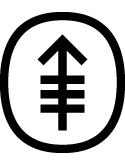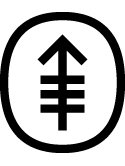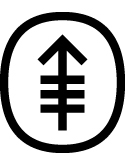Antitumor effects of doxorubicin in combination with anti-epidermal growth factor receptor monoclonal antibodies Journal Article
| Authors: | Baselga, J.; Norton, L.; Masui, H.; Pandiella, A.; Coplan, K.; Miller, W. H. Jr; Mendelsohn, J. |
| Article Title: | Antitumor effects of doxorubicin in combination with anti-epidermal growth factor receptor monoclonal antibodies |
| Abstract: | Background: A variety of human tumors frequently express high levels of epidermal growth factor (EGF) receptor and its ligand, transforming growth factor α (TGF-α), which in some tumors is associated with poor prognosis. Monoclonal antibodies (MAbs) that block the binding of TGF-α or EGF to the receptor can inhibit proliferation of tumor cells that express the receptor. Studies suggest that these MAbs may enhance the antitumor effects of chemotherapy. Purpose: Our purpose was to study, in vitro and in vivo, the antitumor effects of doxorubicin in combination with anti-EGF receptor MAbs against tumor cells expressing high levels of EGF receptor. Our goal was to achieve maximum initial cytoreduction with high-dose doxorubicin in association with prolonged blockade of EGF receptor with MAbs. Methods: Anti-EGF receptor MAbs 528 (isotype IgG2a) and 225 (isotype IgG1) were used in combination with doxorubicin against cells from human A431 squamous cell carcinoma and human MDA-468 breast adenocarcinoma. Both A431 and MDA-468 cells express high levels of EGF receptors and TGF-α. Cultured cells were treated with doxorubicin (range, 0-10 nM) in the presence or absence of MAb 528 or 225 (range, 0-30 nM). At 48 hours, doxorubicin-containing medium was removed, and treatment with antibody was continued for 5 days, when cell proliferation assays were performed. The activity of the agents and the combinations against well-established xenografts in BALB/c nude mice was also studied. In nude mice, doxorubicin was given at doses of 50-100 μg/20 g body weight on 2 successive days, and MAbs 528 and 225 were given at a dose range of 0-2 mg intraperitoneally twice a week. Results: MAbs 528 and 225 both enhanced the antitumor effects of doxorubicin against A431 and MDA-468 tumor cells, producing additive growth suppression in cell cultures. MAb 528 increased the antitumor effects of doxorubicin by 32%-42%, and similar results were obtained with MAb 225. In BALB/c athymic mice, the treatment of well-established xenografts with either doxorubicin or anti-EGF receptor MAb alone temporarily inhibited growth, but the combination of both agents substantially enhanced antitumor activity over that of doxorubicin alone in A431 and MDA-468 cell xenografts. The combination treatment of mice bearing A431 xenografts resulted in tumor eradication of 40%-100% in the surviving mice in several independent experiments. The enhanced antitumor activity was dose dependent. Conclusions: Our results suggest that anti-EGF receptor MAbs substantially enhance the effects of doxorubicin against well-established xenografts of tumor cells expressing high levels of EGF receptors. Implications: Clinical trials with anti-EGF receptor MAbs are being conducted, and trials with anti-EGF receptor MAbs combined with doxorubicin are planned. [J Natl Cancer Inst 85: 1327-1333, 1993] © 1993 Oxford University Press. |
| Keywords: | controlled study; squamous cell carcinoma; carcinoma, squamous cell; doxorubicin; dose response; nonhuman; combined modality therapy; drug megadose; adenocarcinoma; mouse; animal; mice; epidermal growth factor receptor; animal model; receptor, epidermal growth factor; antineoplastic activity; dose-response relationship, drug; tumor cells, cultured; mice, inbred balb c; monoclonal antibody; cancer inhibition; antibodies, monoclonal; nude mouse; mice, nude; experimental neoplasm; neoplasm transplantation; receptor blocking; breast adenocarcinoma; transforming growth factor alpha; intraperitoneal drug administration; human; female; priority journal; article; support, non-u.s. gov't; support, u.s. gov't, p.h.s. |
| Journal Title: | JNCI: Journal of the National Cancer Institute |
| Volume: | 85 |
| Issue: | 16 |
| ISSN: | 0027-8874 |
| Publisher: | Oxford University Press |
| Date Published: | 1993-08-18 |
| Start Page: | 1327 |
| End Page: | 1333 |
| Language: | English |
| DOI: | 10.1093/jnci/85.16.1327 |
| PUBMED: | 8340945 |
| PROVIDER: | scopus |
| DOI/URL: | |
| Notes: | Article -- Export Date: 1 March 2019 -- Source: Scopus |
Altmetric
Citation Impact
BMJ Impact Analytics
Related MSK Work









